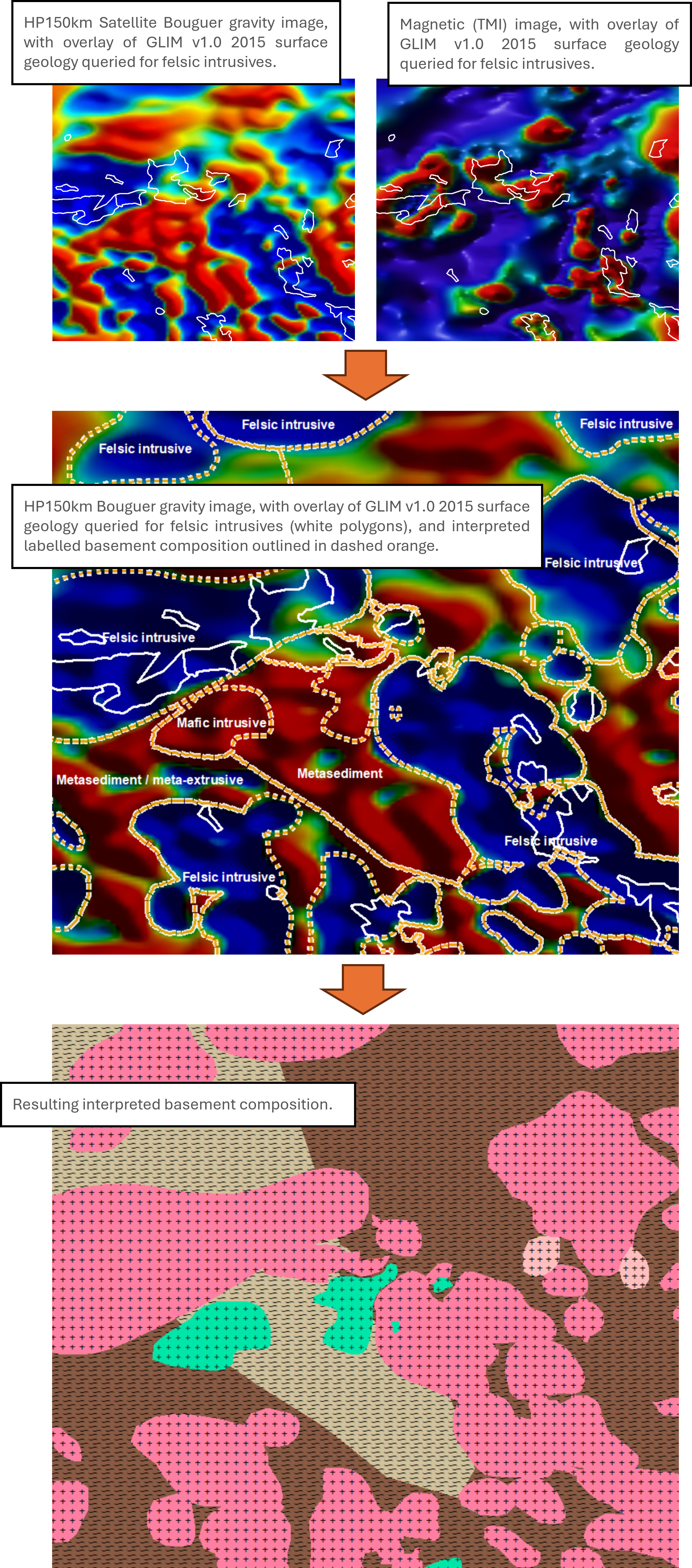SEEBASE studies deliver a uniquely detailed interpretation of basement composition beneath sedimentary cover, combining interpretation of gravity and magnetic data with the SEEBASE depth-to-basement model, tectonic history, and surface geology.
By characterising the magnetic and gravity response of known basement lithologies, and extrapolating these units undercover, the SEEBASE workflow builds a seamless map of basement composition using over 60 lithology classifications.
SEEBASE Basement Composition provides important inputs for exploration across a number of resource sectors including:
Hydrocarbons — Influences basin thermal history through crustal heat production and controls structural architecture that influences hydrocarbon generation, migration pathways, and trap development.
Geothermal — Determines heat production, thermal conductivity, and fracture characteristics of the upper crust, which contribute to subsurface temperature gradients.
Hydrogen — Identifies ultramafic basement rocks capable of generating natural hydrogen through water–rock reactions such as serpentinisation.
Helium — Identifies radiogenic basement lithologies enriched in uranium and thorium that can provide a primary source for accumulations.
Global SEEBASE includes interpreted basement composition and is available globally, regionally, or by custom extract.
Basement composition interpretation can be upgraded through tailored SEEBASE studies integrating high resolution potential field data, digital surface geology, seismic and well intersections.
Open file examples are available through open-file studies conducted for Australian state geological surveys:



